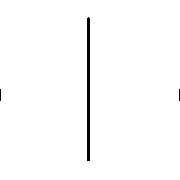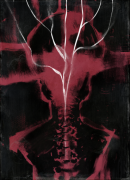|
yeah that saw on the ground in the background of your pic is a compound miter saw to me, a "drop saw" is this metal-cutting saw:  you put your workpiece in and let the saw slowly fall through the piece as it cuts. But I can see how one might call a miter saw a drop saw too. your project makes more sense to me now and I think scrapping it together with light material and some L brackets is wise since you want it light and portable. You mentioned using a table saw to do lap joints at some point. If you have access to a table saw, many more joints also become much easier: a simple jig lets you use a table saw to cut the fingers of a box joint, for example, and it's fairly trivial to cut rabbets and dadoes using a table saw to make various other joints. The main joints I don't think you can do with a table saw at all are dovetails and mortises for mortise & tenon joints (although you can cut the tenons). Those framing timbers (studs) are probably massive overkill for your project but they'll hold nice and stiff once you stick them together with screws or nails. The MDF with laminated surface you saw before is probably melamine surfaced particle board, which is extremely common for cheap furniture. You can usually find it in the prefab shelving unit area of your big box store, rather than in the lumber section. It is dimensionally very stable; very heavy; ideal for super flat smooth surfaces, but immediately ruined when it soaks up any amount of water. It's also very cheap to manufacture, which is why flat pack furniture is made of it. I assume not all of it is actual honest-to-god melamine surface, there must be several other compounds used, but it all sort of falls under that name and is sometimes just called "melamine" even thought that's just the stuff on the surface.
|
|
|
|

|
| # ? May 15, 2024 22:01 |
Leperflesh posted:to me, a "drop saw" is this metal-cutting saw: thats a bandsaw  i've never heard the term "drop saw" before but I would assume miter saw if i heard it out of the blue. seems similar to "chop saw"
|
|
|
|
|
Pretty sure drop saw is an aussie/kiwi term for a miter, yeah.
|
|
|
|
A drop saw is when the floor isn't level under your radial arm saw
|
|
|
|
PokeJoe posted:thats a bandsaw Yeah, metal cutting bandsaw. I'd interpret a drop saw as a slider miter saw, since you pull the head out and "drop" it onto the piece. Slowly. Slider-miter sounds cooler though.
|
|
|
|
The difference is, the miter saw is sprung, you have to actually push it down. Whereas the metal-cutting bandsaw pictured falls on its own, that's how it's designed. You set your workpiece up and can walk away while it cuts through six inches of I beam over the next couple of minutes. Still, colloquialisms are what they are. You can't argue with the home of the drop bear.
|
|
|
|
I built a small stepstool from pine, what a nice wood to work with. It cuts and planes so easily compared to the hardwoods I normally use. This is one of the few projects I've built totally from pine, I normally use it for drawer sides and back. The only downside was this board was incredibly resinous, it really gummed my bandsaw blade up and my planer rollers.
|
|
|
|
Looks good! Freshly planed pine has a great look, it's a shame it dents and deforms trivially
|
|
|
|
|
PokeJoe posted:Looks good! Freshly planed pine has a great look, it's a shame it dents and deforms trivially That just adds character IMO. You can read the history of a well-used bit of furniture from all the dings and dents in it.
|
|
|
"well used" aka I banged it into the wall and planed it against a few glue blobs 
|
|
|
|
|
Anyone know the name of the joint that is a blind tenon that is split and has a wedge inside? I remember seeing it done and want to use it for something.
|
|
|
|
That's what I just used on my mallet, it's a "blind wedged tenon" as you literally described
|
|
|
|
|
Found the name, fox tenon. This is the article I was looking for https://paulsellers.com/2021/12/calculating-for-fox-wedging/
deimos fucked around with this message at 07:10 on Dec 8, 2023 |
|
|
|
wtf is with these bonus names
|
|
|
|
|
PokeJoe posted:wtf is with these bonus names Reading a bit more, it's named after the foxtail, a weed that has barbs that makes it so that once it goes in (usually into animal nostrils), it doesn't come out
|
|
|
|
PokeJoe posted:wtf is with these bonus names what happens when basically all the knowledge in a field comes from hearing some old dude vaguely describe a technique he saw someone else do once 30 years ago and has made up everything else he knows about it since. such as that etymology I've seen it referred to in books on Japanese joinery as jigoku hozo, which I'm given to understand translates to "gently caress this joint" A Wizard of Goatse fucked around with this message at 08:20 on Dec 8, 2023 |
|
|
|
A Wizard of Goatse posted:I've seen it referred to in books on Japanese joinery as jigoku hozo, which I'm given to understand translates to "gently caress this joint" lol 
|
|
|
|
Lol
|
|
|
|
|
Japanese woodworking euphemisms are pretty fun. Their term for a story pole literally translates to "stupid stick" because it makes it really hard to gently caress things up.
|
|
|
|
Meow Meow Meow posted:I built a small stepstool from pine, what a nice wood to work with. It cuts and planes so easily compared to the hardwoods I normally use. This is one of the few projects I've built totally from pine, I normally use it for drawer sides and back. The only downside was this board was incredibly resinous, it really gummed my bandsaw blade up and my planer rollers. Slugworth fucked around with this message at 12:31 on Dec 8, 2023 |
|
|
|
Meow Meow Meow posted:I built a small stepstool from pine, what a nice wood to work with. It cuts and planes so easily compared to the hardwoods I normally use. This is one of the few projects I've built totally from pine, I normally use it for drawer sides and back. The only downside was this board was incredibly resinous, it really gummed my bandsaw blade up and my planer rollers. Looks wonderful! Great job
|
|
|
|
Am I correct that normally one would use something like a belt sander to fine-tune the length of parts cut on a mitre saw? We're talking 1x2's. Meow Meow Meow posted:I built a small stepstool from pine, what a nice wood to work with. It cuts and planes so easily compared to the hardwoods I normally use. This is one of the few projects I've built totally from pine, I normally use it for drawer sides and back. The only downside was this board was incredibly resinous, it really gummed my bandsaw blade up and my planer rollers. Seconding that that's a nice lookin' stepstool! Speaking of planing, if there's any interest, I'll post about the japanning process when I try it for the first time - it's the traditional black finish used on old hand planes and other tools, as well as Model T's, etc. You can buy anodised black aluminium for doing tintypes these days for quite cheap, but I'm going to try and take a piece of sheet metal from the body of an old truck, flatten it, cut it down, japan it, then take a picture of said truck on it. Surprisingly the turpentine was a bit of a PITA to find, neither Lowe's nor Home Depot even had it on stock on their websites, had to drive halfway across town to an Ace Hardware. Khizan posted:lol I've gotten back into studying Japanese in the last year, maybe I should pick up a woodworking book on Amazon.co.jp and use that for practice.
|
|
|
|
Ethics_Gradient posted:Am I correct that normally one would use something like a belt sander to fine-tune the length of parts cut on a mitre saw? We're talking 1x2's. I'd usually rough cut things to approximate length, make sure one end is sufficiently square, and then cut the other to final. You can make cuts that are more than accurate enough for the vast majority of purposes on a miter saw. It helps to use stops if you need multiple parts cut to a matching length, or to at least pay attention to how you're marking. E.g. if you have a board you want to match and you lay it on top of another board for marking, keep in mind that your mark will be past the end of the original so you want to align your saw so that the blade it eating the entire mark. If you need something accurate but you can't easily measure physically (like if you have the carcass of a bookshelf and you want to cut a shelf to fit inside it), you can always sneak up on the right length—the miter saw is just as happy to take off 1/32nd as to cut a board in half. Depending on how good of a job you do you might want to sand after assembly, but a belt sander sounds like a terrible way to get a board to a particular length if you care about the end being square. Wallet fucked around with this message at 15:50 on Dec 8, 2023 |
|
|
|
Meow Meow Meow posted:I built a small stepstool from pine, what a nice wood to work with. It cuts and planes so easily compared to the hardwoods I normally use. This is one of the few projects I've built totally from pine, I normally use it for drawer sides and back. The only downside was this board was incredibly resinous, it really gummed my bandsaw blade up and my planer rollers. One of my favourite things about pine is the way that the endgrain soaks up finish and creates contrast like that.
|
|
|
|
Wallet posted:I'd usually rough cut things to approximate length, make sure one end is sufficiently square, and then cut the other to final. You can make cuts that are more than accurate enough for the vast majority of purposes on a miter saw. Ah, that is a good point about losing the nice square end I'm getting from the miter saw by sanding. I really should have thought to use stops, I'll try that with the actual dark box framing since they'll be in pairs for each dimension. Probably just something simple like measuring, then clamping a scrap of wood in place.  The platform wasn't quite as square as I thought, so I wound up having to unscrew one side of the frame from the base and screw it back in slightly askew to get it to slide in and out nicely. Still probably an improvement from my previous effort. edit: actually, is there something I'm missing about installing drawer slides? The last screw (closest to the back) is always a huge pain in the arse because you have to install it through the holes of the slide. For some insane reason, the hole you're supposed to work through is just a little too small to get the head of the little screw that comes with the slide though, so I've wound up having to enlarge it with a step bit in order to avoid 10+ extremely frustrating minutes fiddling around with a magnetic screwdriver tip trying to finesse it into place from the side. Ethics_Gradient fucked around with this message at 16:05 on Dec 8, 2023 |
|
|
|
Ethics_Gradient posted:edit: actually, is there something I'm missing about installing drawer slides? The last screw (closest to the back) is always a huge pain in the arse because you have to install it through the holes of the slide. For some insane reason, the hole you're supposed to work through is just a little too small to get the head of the little screw that comes with the slide though, so I've wound up having to enlarge it with a step bit in order to avoid 10+ extremely frustrating minutes fiddling around with a magnetic screwdriver tip trying to finesse it into place from the side. Usually drawer slides have a ton of holes in them and you don't need a screw in all of them—usually two is sufficient, or three for really long slides. I can't tell from the photo but it kind of looks like you're putting more in than you need to. You can drill little pilots if you're just having an issue getting the screws started in the right place, but if you can't get the slide to align right to get access to one of the holes I'd just skip it and use a different one. Edit: This is a stupid question, but you know that the two sides of the slide come apart by pushing the end of the little black plastic thing up/down, right? Wallet fucked around with this message at 16:27 on Dec 8, 2023 |
|
|
|
Ethics_Gradient posted:Speaking of planing, if there's any interest, I'll post about the japanning process when I try it for the first time - it's the traditional black finish used on old hand planes and other tools, as well as Model T's, etc. You can buy anodised black aluminium for doing tintypes these days for quite cheap, but I'm going to try and take a piece of sheet metal from the body of an old truck, flatten it, cut it down, japan it, then take a picture of said truck on it. i have a couples old planes im restoring so im definitely interested in how you do it.
|
|
|
|
TooMuchAbstraction posted:That just adds character IMO. You can read the history of a well-used bit of furniture from all the dings and dents in it. That's my philosophy on this, and most of the stuff I build, looks better with age.
|
|
|
|
For squaring up cross-cuts and trimming to very precise lengths, a shooting board is the way.
|
|
|
|
Ethics_Gradient posted:Ah, that is a good point about losing the nice square end I'm getting from the miter saw by sanding. Fine trimming with a miter saw is done by bringing the blade down and then pressing your piece against the face of the blade. Raise the blade and make a cut. You'll shave off just a tiny fraction of an inch (about 1/64), essentially the width of the stick-out of the carbide teeth. You can press harder against the blade and warp it a little to cut off a bit more.
|
|
|
|
note that the "pressing against the blade" step is done when the saw is not running
|
|
|
|
I'm looking for a nice oil finish for walnut -- would like to it be non-glossy but reasonably water-resistant (this is a coat rack in the PNW). This piece of wood is pretty knotty so I need something that won't come out splotchy if the penetration is uneven. Any recommendations?
|
|
|
|
Bloody posted:note that the "pressing against the blade" step is done when the saw is not running Thanks for that clarification because I definitely would have tried it the other way first 
|
|
|
|
Setec_Astronomy posted:I'm looking for a nice oil finish for walnut -- would like to it be non-glossy but reasonably water-resistant (this is a coat rack in the PNW). This piece of wood is pretty knotty so I need something that won't come out splotchy if the penetration is uneven. Any recommendations? Osmo Polyx is great but pricy. Their matte finish looks like there is no finish on the wood at all but water beads right off. Otherwise Danish Oil is fine and will develop a satin sheen at most. Boiled linseed oil is fine too and with even less sheen, tho both will make walnut quite dark.
|
|
|
|
Kaiser Schnitzel posted:Osmo Polyx is great but pricy. Their matte finish looks like there is no finish on the wood at all but water beads right off. Otherwise Danish Oil is fine and will develop a satin sheen at most. Boiled linseed oil is fine too and with even less sheen, tho both will make walnut quite dark. Osmo Polyx looks like a great option. Looks like it's in stock at Woodcraft Seattle, too. I'll go pick up a can tomorrow. Thank you!
|
|
|
|
Yeah make a shooting board they're easy and work great
|
|
|
|
|
I'm thinking of making a record cabinet out of this old tabletop. I think it's cherry, but it has this horrific gel stain on it:   My plan is to sand it all off before I cut it up into pieces for the project. I'm gonna start with 80 grit in the orbital. Does that sound like the right approach?
|
|
|
|
it'll definitely be easier to sand in one piece. just make sure you wear a dustmask, you really dont want to breathe that varnish in
|
|
|
|
plane it smooth
|
|
|
|
|

|
| # ? May 15, 2024 22:01 |
|
Yeah I've had much better luck getting finish off with an edge tool vs sandpaper. Card scraper, Stanley #80 cabinet scraper or a handplane do a nice job where sandpaper gets gummy. I'd also start with a small corner or something first, are you sure that it's solid? It looks like it has perimeter edging which means it may be a veneered sheet good.
|
|
|

































